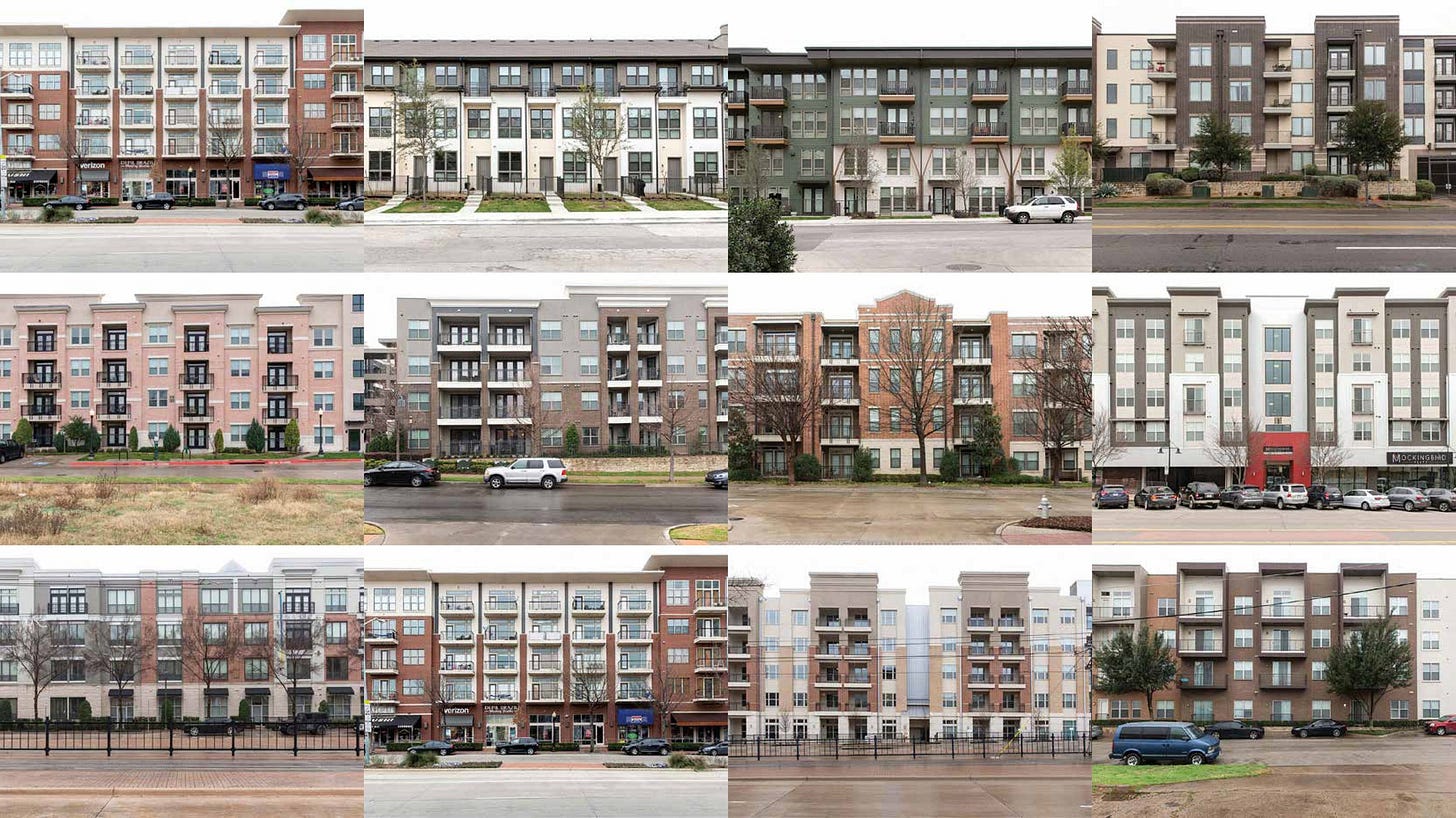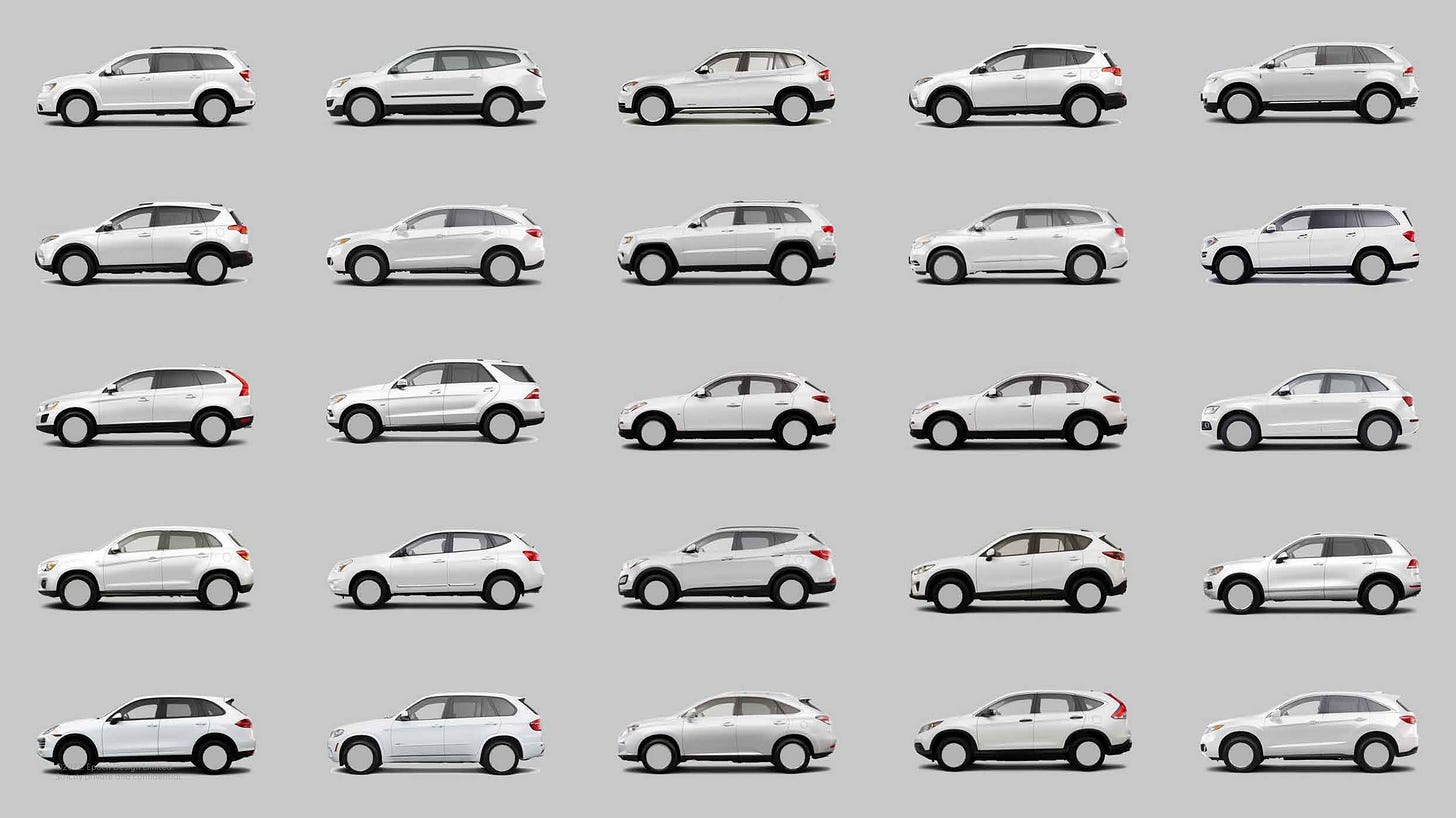The inexplicable charm of the flat and same
This interesting article by Alex Murrell outlines the increasing aesthetic homogeneity in various aspects of human life and culture. He explores this phenomenon, which he calls the Age of Average, through different lenses - cultural, economic, technological, psychological - and provides a long list of instances where our houses, coffee shops, restaurants, buildings, cars, logos, clothing, movies, books, video games, and brands manifest a debilitating sameness.
The architectural example, attributed in the article to restrictive building codes, people trying to stuff extra buildings on every site, and it being cheaper to build the same cruft everywhere:
And the cars, which Ian Callum, who led design at Jaguar Land Rover for two decades, writes: ”Cars are now designed for the broadest possible audience, across the broadest number of countries, to be manufactured in the most efficient possible way.”
Main reasons the Age of Average is happening:
Cultural Smoothing: Even though it seems like it would be broadly about local cultures being overshadowed by global trends, it’s more like everyone in the world wants to feel like they live in Brooklyn. (Described here as “Modern Life Space”, “International AirBnB Style”, or the “Brooklyn Look”)
It’s Cheaper: The global marketplace and mass production strategies drive towards standardization. It’s taken awhile for anyone to notice, so I think they’ve gotten away with it.
The Algorithms: The recommendation algorithms on social media and streaming platforms that funnel users towards trending and popular content is a microcosm for what happens in any market especially when it comes to the design of an electric toothbrush website.
People are Fundamentally Boring and Unimaginative and want everything to be both completely familiar and somehow unique.
I particularly love the example of Russian artists Komar and Melamid who in a totally prescient 1990s art project engaged a market research firm to delve into the preferences of people on various artistic elements in artwork —from color and shape to the nature of the figures and settings. After gathering data from over 11,000 respondents across 11 nations they realized that everyone wants the same thing in a picture. Basically, blue with serene water bodies, rugged terrains, trees, and human figures doing things like wandering around and raising Swiss flags.
So, this is literally exactly what Generative AI LLMs like Midjourney do. Images created by Generative AI are the average of the data the large language model was trained on. The images are “average”, the imagistic equivalent of the monochrome veil of “blanding” that Murrell describes.
I’m thinking this is interesting because when we look at the results from Generative AI LLMs, a mainstream complaint is that they are mediocre and uninspired, a haphazard combination of unrelated images lacking any originality, but when we look at the world we live in (Age of Average) and the artwork we prefer (Komar and Melamid), this is actually what “we” “want”….




